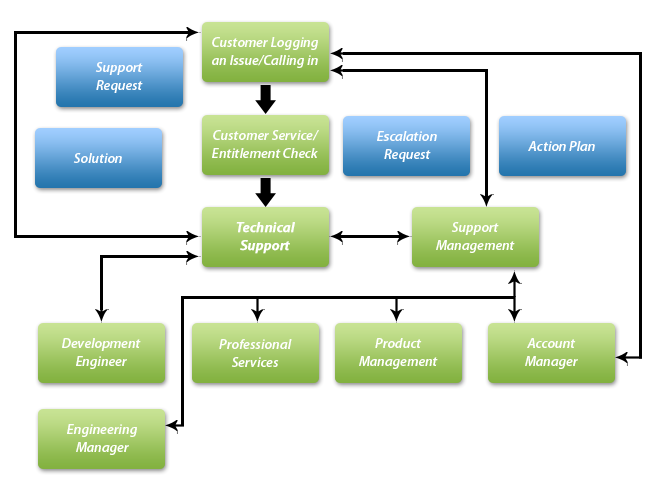![]()
A. Call Escalation Process

You can escalate a support request at any time either by speaking directly with the floor supervisor, technician assigned or by requesting to speak with a Duty Manager/Regional Escalation Manager.
The Effective handling of escalated calls and good service recovery are, for many call centers, the very best opportunity to demonstrate to customers that you want to resolve their call and you really care about their concerns. Based on the fact that escalation Customer Service Representative (CSR) are, in many cases, the last resort for a customer to have their call resolved, it is essential that the call center call escalation practices achieve high-levels of call resolution, preferably on the first call.
5 Reason to Improve you Call Escalation Performance
- reduce operating cost-effective
- improve call center customer satisfaction
- reduce customers at risk
- increase opportunities to sell
- improve employee satisfaction
There are 3 levels of internal escalation layers for addressing customer issues.
Technical Support team (Level 1)– This team handles the proactive monitoring and first level technical support. This team is also responsible for providing timely updates on your trouble tickets and ensuring that we never breach the defined SLA.
Technical Support team (Level 2)– This team is the first level of internal escalation, which handles issues escalated by Level 1 support team.
Center of Excellence (COE)– COE Engineers are level 3 within the internal escalation chart and provide the final level of operations assistance and first level engineering assistance. If the Incident Management team (Level 1 and Level 2) is unable to provide the fix for a particular issue, the same is escalated to the relevant COE team following standard escalation procedures. This team is also responsible for proactive management and 100% up-time of our core devices and customer devices under management.
Escalation Purpose
This document outlines the escalation procedure for a customer’s concerns, questions, etc. Technical Support is the appropriate group to receive notifications of customer issues, and from this department, the customer can initiate the escalation process. Technical Support is responsible for and has access to all resources available in providing a solution to a customer problem. If for any reason, a customer feels that the problem is not being given the appropriate attention or priority, the following escalation procedures should be followed.
Guidelines for an Escalation Issue
Technical Support is the first department to receive all customer concerns and issues. The Technical Support Agent will review the scenario and either provide information about the customers’ concern or transfer the customer to the correct department. If after speaking with Technical Support about a problem or concern, and a customer does not feel he/she has been given the urgency or priority deserved, the escalation process goes into effect.
Escalating a Complaint:
Step 1. Contact a Customer Service Representative : Contact our customer service department to discuss any concerns you have about your service. Our representatives will be happy to help you.
Step 2. Speak with a Supervisor:
If our customer service representative was unable to resolve the situation to your satisfaction, don’t hesitate to ask for a supervisor. Supervisors will do everything in their power to solve your problem. We suggest you write down the following information:
• The supervisor’s name and employee number
• The date the conversation took place
Step 3. Contact the Bell Customer Relations Centre: We resolve the vast majority of problems in the first two steps. If it did not happen in your case, you may submit a complaint to the Bell Customer Relations Centre. One of our senior representatives will work with you to address your concerns.

 LOGIN
LOGIN